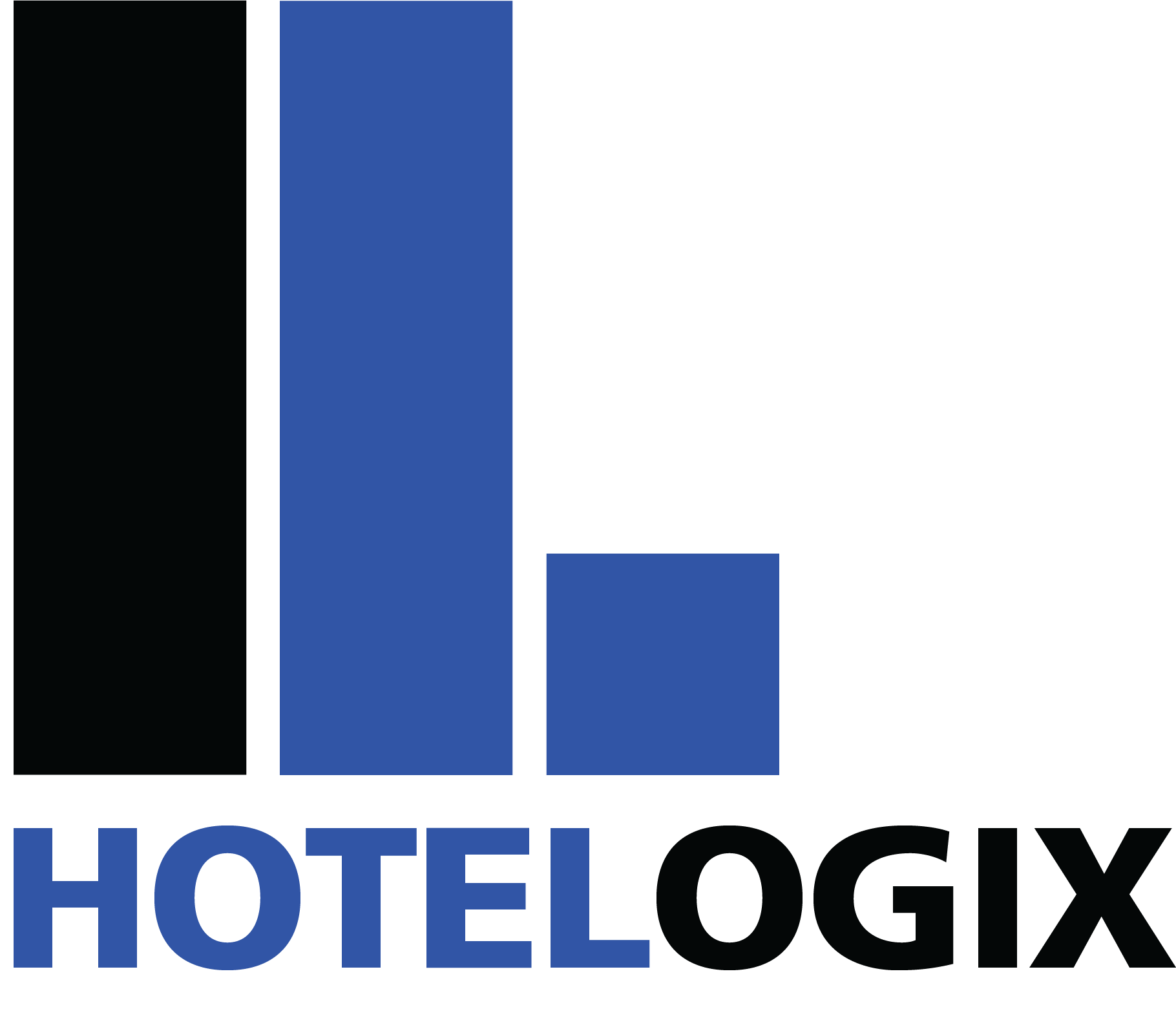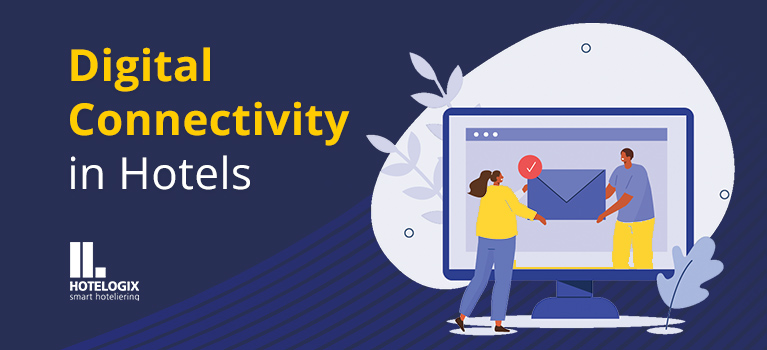We live in a digitally connected world. With the touch of a button, you can be “face-face” with friends and family worldwide. In many ways, digitization has made us feel closer to the ones we love. Plus, digital communication has allowed us to widely broaden the horizons of whom we can reach and when.
When it comes to hotels, digital connectivity allows a way to connect with your guests all at once, at the tap of a button. However, what value does this provide? Is there such a thing as too much digital communication? Digital connectivity with guests onsite allows new ways to communicate with guests and potentially increases guest satisfaction.
Your Guests Are Online
Let’s face it – your guests are already online using their smartphones or laptops during their stay. Whether a guest is travelling for leisure or business, these days, you’d be hard-pressed to find a guest who did not bring an Internet-connected device with them on their stay.
For this reason, hoteliers have a new toolbox of techniques they can use to stay in touch with guests, so that they are provided the best experience possible. Integrating certain hotel communications into a digital form can help connect your front desk with guests whether they’re staying on the 3rd floor or the 43rd floor, making even a large hotel feel smaller and easier to manage for staff.
Pre-Stay Digital Communication
One great way to use digital connectivity with guests is to connect with them, wherever they are, before their stay. Once a guest books a room with you, you can trigger an automated message to be sent to the guest thanking them for their business and preparing them for their stay.
Your digital pre-stay communication can highlight important information about their upcoming trip to your hotel, such as:
- Check-in time
- Address/location of the hotel
- Parking options onsite
- Information about attractions and restaurants in the nearby area
- Information detailing what amenities and restaurants they will find onsite
- And anything else important you’d like to add
Pre-stay communication is a simple gesture that can greatly enhance the guest experience. Planning a trip is hard, and they will appreciate that the hotel recognized the basic logistic questions they might have before their stay. Plus, since you can set this up to be an automatic email after a booking, it takes zero legwork from the onsite team to make guests feel welcomed before they even step through the front door.
Digital Communication During the Stay
There are a few practical applications for digital applications throughout the guest’s stay. Although your onsite staff should always be ready and receptive to helping guests face to face, some guests would rather get their questions answered from the comfort of their room. Business travellers may be so busy they simply do not have time to stop by the front desk and try to seek the information they want. With online digital communication, they no longer need to.
With digital communication, you can allow guests to get the same experience whether they talk to a staff member or access information by smartphone. You can employ a digital map of the property by using a QR code or cloud-based application software. This way travellers can easily find where the closest water station is, where the pool is located, and other amenity locations onsite.
You can also integrate ways for guests to utilize amenities more easily with their smart devices. By integrating booking sites for your onsite spa, yoga classes, restaurant reservations, and more, you can entice more guests to pay for these services. When a guest is bombarded at check-in with a staff member spewing off a long list of services they can sign up for during their stay, they are unlikely to truly retain a lot of that information.
When these onsite services and programs are visible via digital avenues, guests can browse the array of services you offer in their downtime. When guests can view these services at a time that works for them, they are more likely to book that morning yoga class or reserve a table at your onsite restaurant. This leads to a better bottom line for the hotel and a more satisfactory guest experience.
Another great way to implement digital communication during the guest’s stay is using service request software. If the guest finds their shower isn’t working correctly, or their lights are flickering, they can use an application to fill out a questionnaire about their issue and when/how they’d like it to be addressed.
Using an integrated cloud-based PMS, these service requests can come through to your staff, who can then address the guest’s problem while they are on site. This greatly lowers the possibility of a negative review over easily fixed issues like a burnt-out lightbulb. Plus, guests will appreciate the convenience of being able to communicate concerns without having to take time out of their day to find a staff member to talk to about them.
Digital Post-Stay Communication
Before technology, you may have lost contact with guests the minute they leave your hotel. With digital communication tools, you can get insight into your guest’s experience once they have left. Upon a guest being checked-out in the hotel management system, you can trigger a survey to be sent to their email or mobile number on file.
These surveys should be focused on asking the guest about the quality of their stay, room for improvement, and any other metrics you are looking to get key insights about. Once you’ve collected several of these, hoteliers can begin to look at trends in the guest experience and make tweaks based on this feedback.
Finding a Balance Between Digital and In-Person Communication
Right now, a fully automated model of running a hotel isn’t feasible, and it may never be. Let’s face it – how many guests would feel safe and welcomed by a hotel that doesn’t have any friendly faces on site? Since the hospitality industry hinges on connection and experiences, it seems some form of human touch will always be important in hospitality.
Digitization is a powerful tool that can help hotels connect to their guests at scale without asking even more of the already busy onsite staff. The hotel industry is a tough one to work in, and many hotels may face staffing shortages due to the toughness of such a job. In times when a hotel is short on staff, digitalized communications can compensate, so a guest never feels as if the hotel was understaffed or operating poorly.
Digital communication should always be balanced with in-person communication on-site. Digital tools should serve as a helping hand to staff, allowing them to connect with more guests than they ever could face-to-face. However, digital communication does not aim to replace personal connection, only supplement, and enhance it where feasible!
Conclusion
In short, don’t expect to see robots and self-serve kiosks running hotels anytime in the near future. However, hoteliers can use digital tools like self-check-in, digitized property maps, guest surveys, and more to enhance and improve the guest experience.
Guests will surely appreciate the convenience digital communication in hotels can offer. When everything they need is accessible within the tap of a button, they will feel better catered to. Plus, digital tools can help staff better manage their workload and provide an exceptional guest experience to every guest on the property, even if they never get to talk face to face. It’s a win for the hotel’s bottom line, the staff’s happiness, and for guest satisfaction!
This article was originally published on partner sites.

